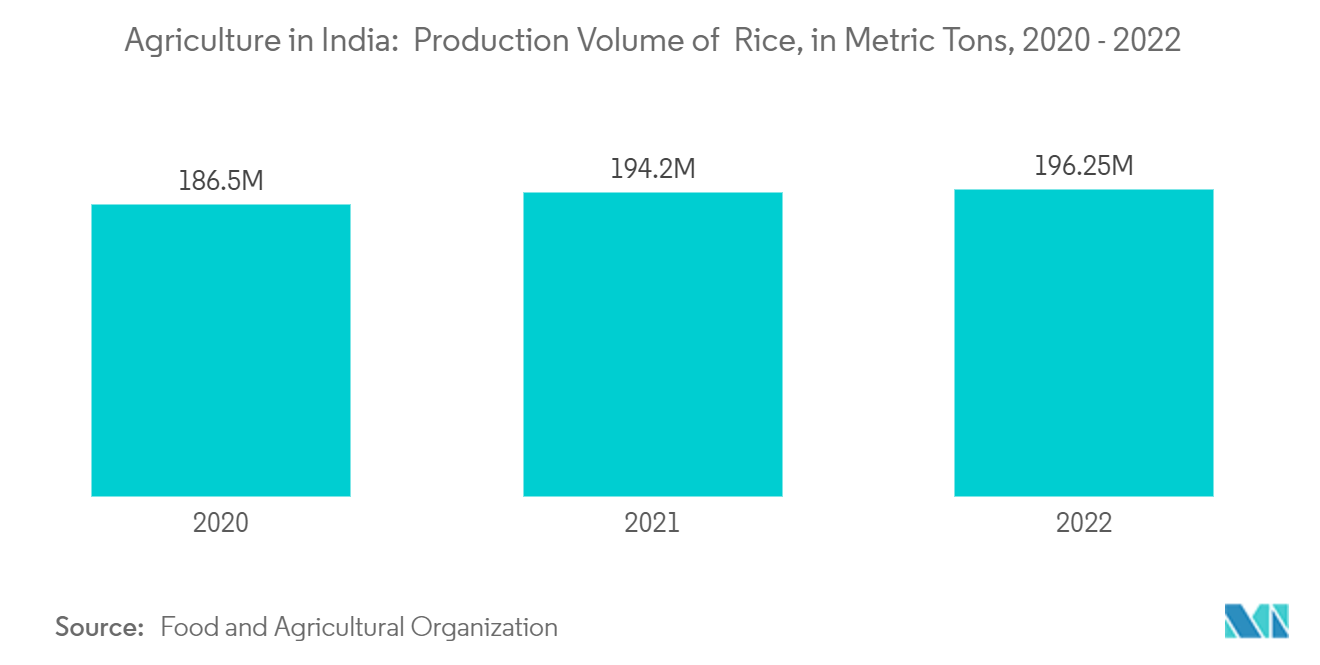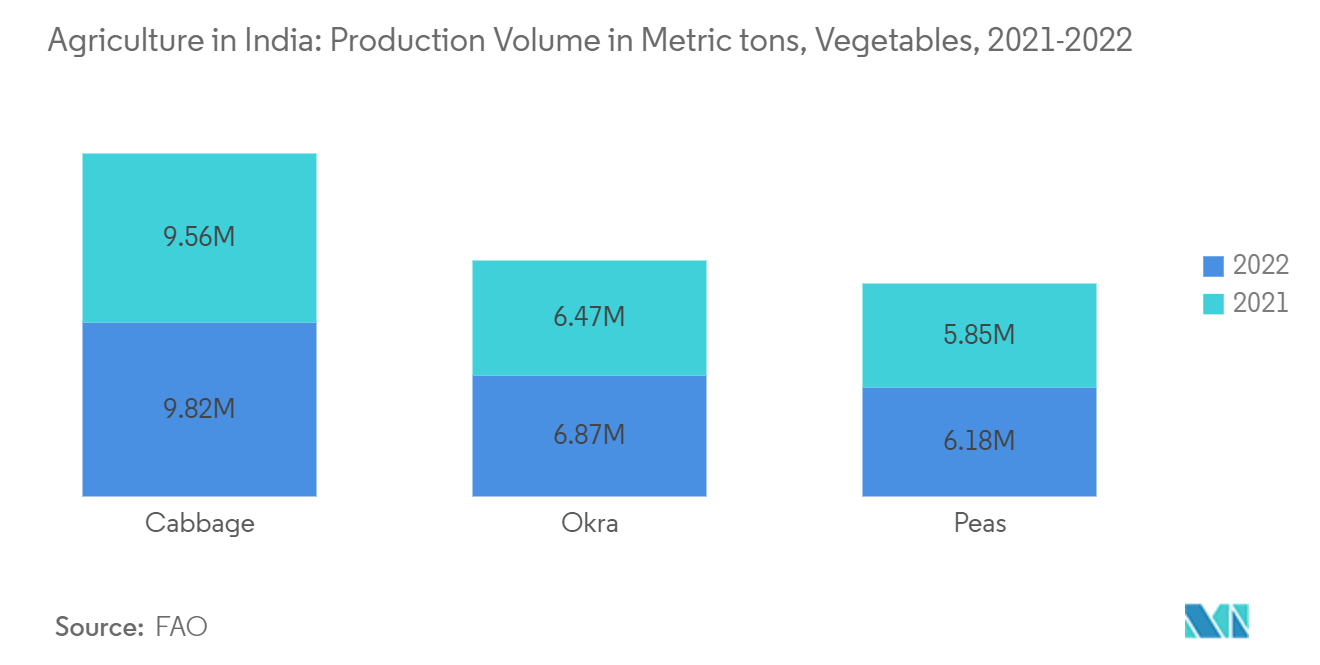Market Trends of India Agriculture Industry
Cereals and Food Grains is Leading the Agriculture Market in India
Cereal and food grains are crucial to the Indian agriculture market. They are a significant part of the diet for most Indians and make a substantial contribution to the country's agricultural GDP. India is one of the world's largest producers of rice, wheat, and coarse cereals. According to the Food and Agriculture Organization (FAO), cereal production increased from 325.1 million metric tons in 2019 to 355.1 million metric tons in 2022.
India is the largest producer and exporter of cereal products in the world. During 2023-2024, India's export of cereals accounted for INR 90,961.67 crore (USD 10,984.27 million). Rice, including basmati and non-basmati, accounted for 95% of India's total cereals export in value terms during the same period. According to the Food & Agricultural Organisation (FAO), India is the world's largest producer of millets (38.40% of world production), the second-largest producer of rice (25.27% of global production) and wheat (13.33% of world production), and the fifth largest producer of maize (2.9% of world production). The domestic consumption of these grains is robust, driven by a large and growing population. Rice and wheat are staple foods across various regions, with rice predominantly consumed in southern and eastern states and wheat in northern and western states. The per capita consumption of these grains is high, emphasizing their importance in Indians' daily diet.

Increasing Demand for Fruits and Vegetables
According to the Indian Council of Agricultural Research (ICAR), increasing awareness regarding the consumption of fruits and vegetables to meet various dietary requirements and nutritional needs has raised the demand for vegetables, consequently leading to an increase in the area under production (from 15.5 million ha in 2019 to 16.7 million ha in 2022). According to FAO (2022), India was identified as the largest producer of ginger and okra among vegetables and the second-largest producer of potato, onion, cauliflower, brinjal, cabbage, etc. India is the second-largest producer of vegetables globally, accounting for 15% of the world's production. The country's production of vegetables and fruits increased from 236 million metric tons in 2019 to 256 million metric tons in 2022. This indicates the expanding supply and consumption pattern of vegetables, which is expected to further fuel the demand in the market in the coming years.
Government initiatives have been pivotal in boosting the agricultural market for fruits and vegetables. The Mission for Integrated Development of Horticulture (MIDH) provides financial aid to farmers, enhancing production quality and quantity. Additionally, investments in cold storage and supply chain infrastructure, driven by the Ministry of Food Processing Industries (MoFPI), reduce post-harvest losses and ensure fresh produce reaches markets more efficiently.
To meet the increasing demand, farmers are diversifying their crops by growing a variety of vegetables. These short-duration crops yield multiple harvests, leading to improved cash flow for the farmers. In February 2022, Punjab Agricultural University in Ludhiana introduced new varieties of strawberries, figs, date palms, grapes, broccoli, Chinese cabbage, celery, lettuce, sweet peppers, and baby corn. These can be grown by farmers for both consumer markets and personal consumption.



